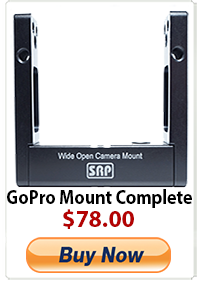Grand Comme Le Baobab to Premier at Montreal Film Festival
By: Chris Collins
The first feature film co-produced by Wide Open Camera is premiering at Montreal World Film Festival later this month. This was my first feature film as cinematographer, and I am excited to share my stories from pre-production to the festival circuit with all of you. Today I will tackle pre-production.
I couldn’t have been more excited when Jeremy Teicher called me and asked if I would be interested in shooting a feature film in Senegal. He had shot a short documentary the year prior, and it was time to turn what he learned through that experience into his first narrative feature film. Jeremy decided to tackle the controversial issue of arranged marriages in the villages of rural Senegal.
The logline: In a rural African village poised at the outer edge of the modern world, a teenage girl hatches a secret plan to rescue her 11-year-old sister from an arranged marriage.
Jeremy did his best to prepare me for what life is like where we were to be shooting. I had never been to any African country before, so I asked him to send me pictures and I did some of my own research into Senegalese customs. With ambitious dreams of shooting an incredibly beautiful film, I decided to call in some favors from my friends at a few different camera companies. I cut a deal with Jeremy so that I could bring a second shooter if I landed enought sponsorhips to keep our rentals to a minimum. Jeremy gave me a few guidelines to keep in mind while deciding what I needed to bring…
-We were going to be working with non-actors, so he wanted to shoot with two cameras rolling at all times to maximize coverage and minimize multiple takes.
-We had to be low-key enough to get through Senegalese customs without raising any red flags—or drawing the attention of thieves out in the country.
-Our shooting location was primarily a small village with no electricity and no reliable coverage from the elements.
-We would be taking a horse cart to and from the village each day, a 30-45 minute ride over bumpy dirt paths—all our gear would need to fit on one cart.
-We would sleep in a hotel with access to wall outlets each night.
I designed a small 2-camera package that would suit our needs to be nimble, and I packed all the gear into two camera backpacks and two soft tripod cases so we could keep the gear on us even while shooting. My second shooter, Luke Hanlein, would wear one backpack and I would wear the other. Jeremy was in charge of the sound equipment and hard drives. We packed everything so that if either Luke or I got robbed, the other backpack would supply a strong enough package to continue shooting.
Once I had put together my camera package, it was time to create a carnet for customs and insurance reasons. A carnet is a form with every piece of equipment including serial number, country of origin, and price. This was provided to customs in order to prove that we weren’t smuggling camera equipment in or out of Senegal to avoid tax on purchases or sales. If you don’t have one of these and you are questioned by customs you may have to pay backed taxes up to 50% of the total value of the items in question. For anybody travelling internationally with professional camera equipment: HAVE A CARNET READY!
Click the link below to see our inventory without replacement price or country of origin.
Next week we will go more in depth into what life was like in Sengal.




